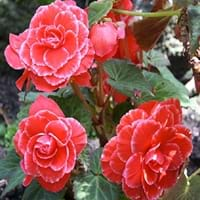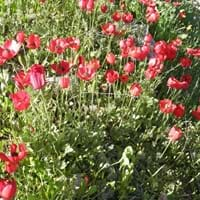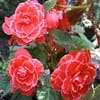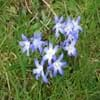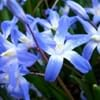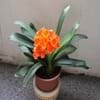Life Span
Perennial
Perennial
Type
Bulb or Corm or Tuber
Bulb or Corm or Tuber
Origin
Hybrid origin
Southern Europe, Mediterranean
Types
'Bellagio Apricot' begonia, 'Bellagio Blush' begonia, 'Bellagio Pink' begonia
Not Available
Habitat
Subtropical climates, Tropical regions
damp meadows, Dry areas, Woodland edges
USDA Hardiness Zone
9-15
8-12
Habit
Clump-Forming
Upright/Erect
Flower Color
Salmon
White, Red, Blue, Pink
Flower Color Modifier
Bicolor
Bicolor
Fruit Color
Not Available
Not Available
Leaf Color in Spring
Green
Green
Leaf Color in Summer
Light Green
Light Green
Leaf Color in Fall
Several shades of Green
Several shades of Green
Leaf Color in Winter
Light Green
Light Green
Leaf Shape
Heart-shaped
Lobed
Plant Season
Summer, Fall
Spring, Winter
Sunlight
Partial shade
Full Sun, Partial Sun, Partial shade
Type of Soil
Loam, Sand
Loam, Sand
The pH of Soil
Acidic, Neutral
Acidic, Neutral, Alkaline
Soil Drainage
Well drained
Well drained
Bloom Time
Early Summer, Summer, Late Summer
Early Spring, Spring, Late Winter, Indeterminate
Tolerances
Not Available
Drought
Where to Plant?
Container, Ground, Pot
Ground, Pot
How to Plant?
Seedlings, Transplanting
Seedlings, Tuber propagation
Plant Maintenance
Medium
Medium
Watering Requirements
Over-watering can cause leaf problems or root diseases, Requires regular watering, Water Deeply
Medium
In Summer
Lots of watering
Lots of watering
In Spring
Moderate
Moderate
In Winter
Average Water
Average Water
Soil pH
Acidic, Neutral
Acidic, Neutral, Alkaline
Soil Type
Loam, Sand
Loam, Sand
Soil Drainage Capacity
Well drained
Well drained
Sun Exposure
Partial shade
Full Sun, Partial Sun, Partial shade
Pruning
Cut or pinch the stems, No pruning needed in the early stages, Prune if you want to improve plant shape, Prune to control growth, Remove dead or diseased plant parts
Remove damaged leaves, Remove dead branches, Remove dead leaves
Fertilizers
All-Purpose Liquid Fertilizer
All-Purpose Liquid Fertilizer
Pests and Diseases
Aphids, Bacterial leaf spot, Botrytis Blight, Foliar nematode, Powdery mildew, Pythium rot, Rhizoctonia crown rot
Cutworms
Plant Tolerance
Drought
Drought
Flower Petal Number
Double
Single, Double, Semi-Double
Foliage Texture
Coarse
Fine
Foliage Sheen
Glossy
Matte
Attracts
Not Available
Butterflies, Hummingbirds, pollinators
Allergy
Asthma
Not Available
Aesthetic Uses
Beautification
Borders, Cottage Garden
Beauty Benefits
Not Available
Not Available
Environmental Uses
Air purification
Air purification
Medicinal Uses
Bronchitis, Candidiasis, Cold, Digestive disorders, Dysentry, Haemoptysis, Liver problems, Menstrual Disorders, Scrofula, Swelling
Antitumor, Cramps
Part of Plant Used
Whole plant
Flowers, Leaves
Other Uses
Used as Ornamental plant
Unknown
Used As Indoor Plant
Yes
No
Used As Outdoor Plant
Yes
Yes
Garden Design
Bedding Plant, Container, Hanging Basket, Houseplant, Tropical
Bedding Plant, Container, Cutflower, Mixed Border, Rock Garden / Wall
Botanical Name
BEGONIA 'Fortune Salmon'
ANEMONE coronaria
Common Name
Fortune Salmon Tuberous Begonia, Tuberous Begonia
Crown Windflower, Lilies-of-the-Field, Poppy-flowered Anemone, wind flower
In Hindi
tuberous बिगोनिया
Poppy Flowered Anemone
In German
Knollenbegonie
Kronen-Anemone
In French
Bégonia tubéreux
Anémone couronnée
In Spanish
Begonia tuberosa
Poppy flowered Anemone
In Greek
Οζώδους Begonia
Poppy Flowered Anemone
In Portuguese
tuberosa Begonia
Poppy Flowered Anemone
In Polish
Begonia guzowate
Zawilec wieńcowy
In Latin
Morbus Begonia
Poppy Flowered Anemone
Phylum
Magnoliophyta
Anthophyta
Class
Magnoliopsida
Equisetopsida
Order
Cucurbitales
Ranunculales
Family
Begoniaceae
Ranunculaceae
Clade
Angiosperms, Eudicots, Rosids
Angiosperms, Eudicots
Tribe
Not Available
Not Available
Subfamily
Not Available
Not Available
Importance of Tuberous Begonia and Poppy Flowered Anemone
Want to have the most appropriate plant for your garden? You might want to know the importance of Tuberous Begonia and Poppy Flowered Anemone. Basically, these two plants vary in many aspects. Compare Tuberous Begonia and Poppy Flowered Anemone as they differ in many characteristics such as their life, care, benefits, facts, etc. Every gardener must at least have the slightest clue about the plants he wants to plant in his garden. Compare their benefits, which differ in many ways like facts and uses. The medicinal use of Tuberous Begonia is Bronchitis, Candidiasis, Cold, Digestive disorders, Dysentry, Haemoptysis, Liver problems, Menstrual Disorders, Scrofula and Swelling whereas of Poppy Flowered Anemone is Antitumor and Cramps. Tuberous Begonia has beauty benefits as follows: Not Available while Poppy Flowered Anemone has beauty benefits as follows: Not Available.
Compare Facts of Tuberous Begonia vs Poppy Flowered Anemone
How to choose the best garden plant for your garden depending upon its facts? Here garden plant comparison will help you to solve this query. Compare the facts of Tuberous Begonia vs Poppy Flowered Anemone and know which one to choose. As garden plants have benefits and other uses, allergy is also a major drawback of plants for some people. Allergic reactions of Tuberous Begonia are Asthma whereas of Poppy Flowered Anemone have Not Available respectively. Having a fruit bearing plant in your garden can be a plus point of your garden. Tuberous Begonia has no showy fruits and Poppy Flowered Anemone has no showy fruits. Also Tuberous Begonia is not flowering and Poppy Flowered Anemone is not flowering . You can compare Tuberous Begonia and Poppy Flowered Anemone facts and facts of other plants too.
